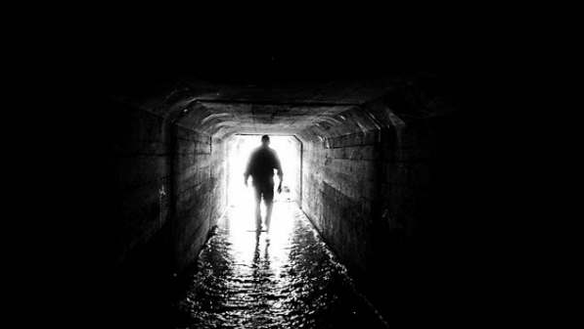Cotard Delusion
 The Cotard delusion bares some similarities to the Capgras delusion. However, in this instance it is not someone else’s identity that is disbelieved, rather it is the patients’ own image which is in doubt. Sufferers of this rare psychiatric disorder are afflicted with the delusion that either they are dead, they do not exist, are decomposing or have lost their blood or internal organs. Occasionally it can also include delusions of immortality. Symptoms of the Cotard Delusion tend to manifest in three stages. In the first stage, sufferers are often hypochondriacal and display signs of psychotic depression. The second stage is defined by full blown development of the syndrome and delusions of negation. The last stage is characterized by severe delusions and chronic depression. The disorder is thought to be neurologically similar to Capgras delusion and often is found in patients with schizophrenia and pre-existing depression, although it has also occurred in patients as an adverse reaction to certain medication and in migraine sufferers.
The Cotard delusion bares some similarities to the Capgras delusion. However, in this instance it is not someone else’s identity that is disbelieved, rather it is the patients’ own image which is in doubt. Sufferers of this rare psychiatric disorder are afflicted with the delusion that either they are dead, they do not exist, are decomposing or have lost their blood or internal organs. Occasionally it can also include delusions of immortality. Symptoms of the Cotard Delusion tend to manifest in three stages. In the first stage, sufferers are often hypochondriacal and display signs of psychotic depression. The second stage is defined by full blown development of the syndrome and delusions of negation. The last stage is characterized by severe delusions and chronic depression. The disorder is thought to be neurologically similar to Capgras delusion and often is found in patients with schizophrenia and pre-existing depression, although it has also occurred in patients as an adverse reaction to certain medication and in migraine sufferers.  One case study said the following: “[The patient’s] symptoms occurred in the context of more general feelings of unreality and being dead. In January, 1990, after his discharge from hospital in Edinburgh, his mother took him to South Africa. He was convinced that he had been taken to hell (which was confirmed by the heat), and that he had died of septicaemia (which had been a risk early in his recovery), or perhaps from AIDS (he had read a story in The Scotsman about someone with AIDS who died from septicaemia), or from an overdose of a yellow fever injection. He thought he had “borrowed my mother’s spirit to show me round hell”, and that he was asleep in Scotland.” Medication combined with electroconvulsive therapy has been found to be a relatively effective form of treatment in some cases of the Cotard Delusion.
One case study said the following: “[The patient’s] symptoms occurred in the context of more general feelings of unreality and being dead. In January, 1990, after his discharge from hospital in Edinburgh, his mother took him to South Africa. He was convinced that he had been taken to hell (which was confirmed by the heat), and that he had died of septicaemia (which had been a risk early in his recovery), or perhaps from AIDS (he had read a story in The Scotsman about someone with AIDS who died from septicaemia), or from an overdose of a yellow fever injection. He thought he had “borrowed my mother’s spirit to show me round hell”, and that he was asleep in Scotland.” Medication combined with electroconvulsive therapy has been found to be a relatively effective form of treatment in some cases of the Cotard Delusion.















